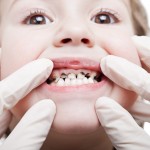
Predicting an individuals risk of caries is considered to be an important element in managing the condition and recommending appropriate care and treatment. A range of methods are currently used, included for example socio-demographic, socio economic, dietary factors, and oral hygiene practices. The aim of this review was to assess the accuracy and the quality of evidence of multivariate models and single factors for predicting future caries in pre-school children and schoolchildren/adolescents.
PubMed, The Cochrane Central Register of Controlled Trials (CENTRAL) and Cochrane Database of Systematic Reviews were searched for prospective longitudinal cohorts or randomised controlled trials (the detailed inclusion criteria are available as supplementary material to the published article). Articles in English, German, Danish, Norwegian and Swedish were accepted. Two reviewers carried out initial selection independently. Study quality was assessed using the QUADAS tool, with two systematic reviews being assessed using the AMSTAR tool. The overall quality of evidence was assessed the GRADE approach.
- 90 articles met the inclusion criteria, seven were rated as high quality, 35 of moderate quality and the remaining 48 of poor quality. Three of the high quality studies related to pre-school children, four to school children and adolescents.
- The accuracy of multivariate models was higher for pre- school children than for schoolchildren/adolescents. However, the models had seldom been validated in independent populations, making their accuracy uncertain.
- Of the single predictors, baseline caries experience had moderate/ good accuracy in pre-school children and limited accuracy in schoolchildren/adolescents.
- The period of highest risk for caries incidence in permanent teeth was the first few years after tooth eruption.
- In general, the quality of evidence was limited.
The authors concluded
Multivariate models and baseline caries prevalence performed better in pre-school children than in school- children/adolescents. Baseline caries prevalence was the most accurate single predictor in all age groups. The heterogeneity of populations, models, outcome criteria, measures and reporting hampered the synthesis of results. There is a great need to standardize study design, outcome measures and reporting of data in studies on caries risk assessment. The accuracy of prediction models should be validated in at least one independent population.
Comment
We have recently commented on a review of caries risk assessment programmes in pre-school children (Dental Elf 31st July 2013). None of these multivariate tools had high likelihood ratios (Dental Elf 14th October 2013) and as the authors suggest this review is in line with other of this area which suggest that caries risk assessment systems have limited validity.
Links
Mejàre I, Axelsson S, Dahlén G, Espelid I, Norlund A, Tranæus S, Twetman S. Caries risk assessment. A systematic review. Acta Odontol Scand. 2013 Sep 2. [Epub ahead of print] PubMed PMID: 23998481.
Dental Elf 31st July 2013 – Caries risk assessment programmes in pre-school children
Dental Elf 15th Oct 2013 – Little evidence for the diagnostic accuracy of new caries detection aids

[…] Dental Elf 16th Oct 2013 – Limited evidence available for caries risk assessment systems […]